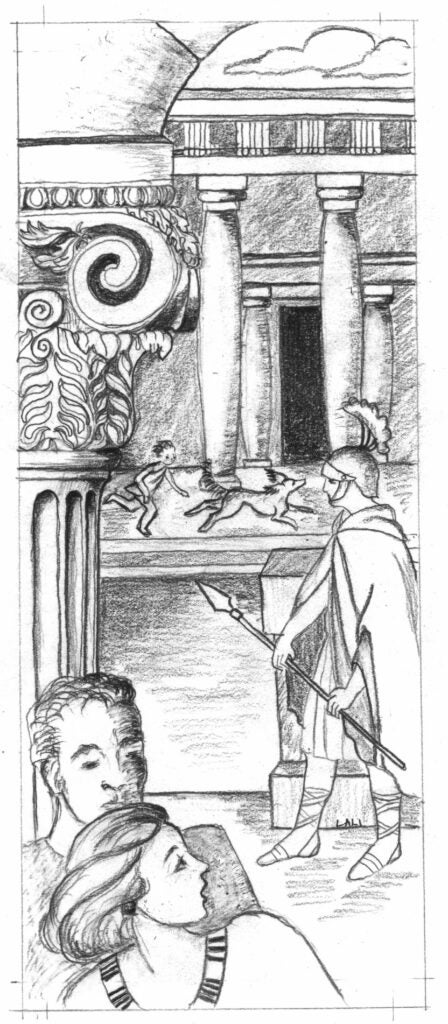Friday from the Archives: “Faces in Stained Glass” by Paul A. Gilster from NCLR 10 (2001)
By Kenly Corya, Editorial Assistant
Paul A. Gilster explores the inherently human desire to be remembered in his short story in NCLR’s Science Fiction and Fantasy issue. Amid heartbreak and betrayal, the main character, Munro, reflects upon his work on an ancient Roman archeological site in France. There, he and his team have developed holograms of Roman citizens which allow tourists to remember and immerse themselves in ancient culture. Like artists of the past, Munro creates these holograms with the faces of people in his life. Diane, a scientist and Munro’s romantic interest, remarks on Munro’s self-inserted hologram, and says, “It reminds me of Notre Dame. Remember how some of the faces in the stained glass windows were people the designer knew, and sometimes the image of the designer himself? A Biblical figure would have the face of a fourteenth-century aristocrat; a Moses would be the glassmaker’s patron.”
While Munro dedicates his time to preserving his personal memories and ancient cultures, Diane devotes herself to anti-aging science and technology. Munro reflects upon the subject of Diane’s experiments: “Diane’s dog, Marcel by name, was no ordinary house pet. Now twenty-two years old, the German Shepherd had outlived his allotted span thanks to the experiments being conducted by her team at the Institut Preval.”
Munro and Diane both grapple with the fear of death and the fear of being forgotten, and this fight manifests in different capacities. Munro works to preserve memory, and in doing so, acknowledges the natural inevitability of mortality. Diane, on the other hand, combats death by using technology to alter DNA, and thus fights nature itself.
Gilster’s piece from 2001 is especially compelling in 2025, as the rise in new technologies such as AI generates fear of technological capabilities and questions what will happen to unique, human contributions. He raises important questions regarding the ethics of scientific developments. This short story exemplifies how technology can work against natural order, but also how technology can serve to protect and preserve human creation. Gilster conjures a world in which technology and art can work in tandem which is evident as Munro claims his holograms, like stained glass, are “just a different way of remembering people.”
Read the entire short story on Gale Cengage or purchase a copy of the 2001 issue featuring science fiction and fantasy.
